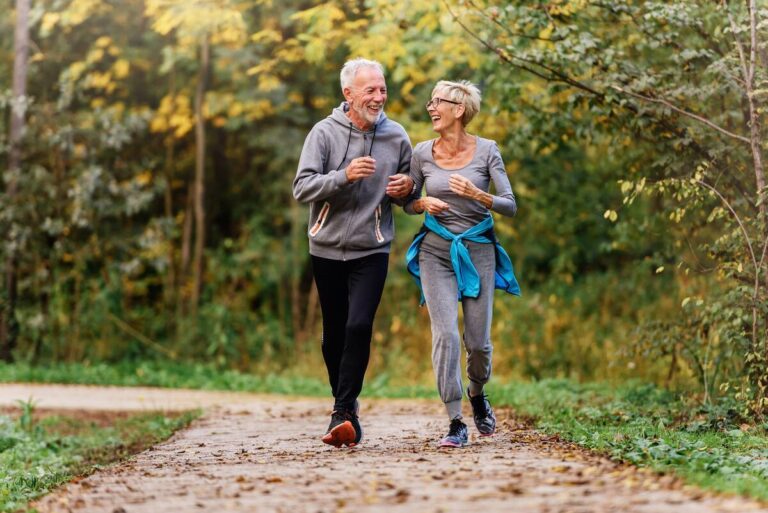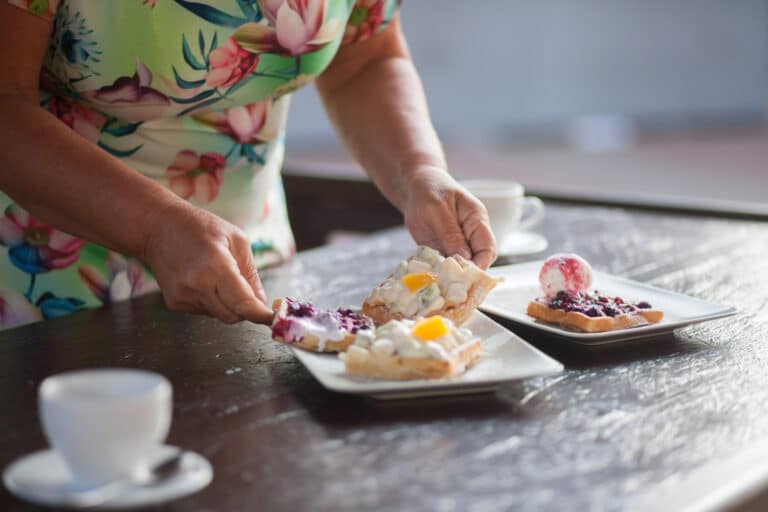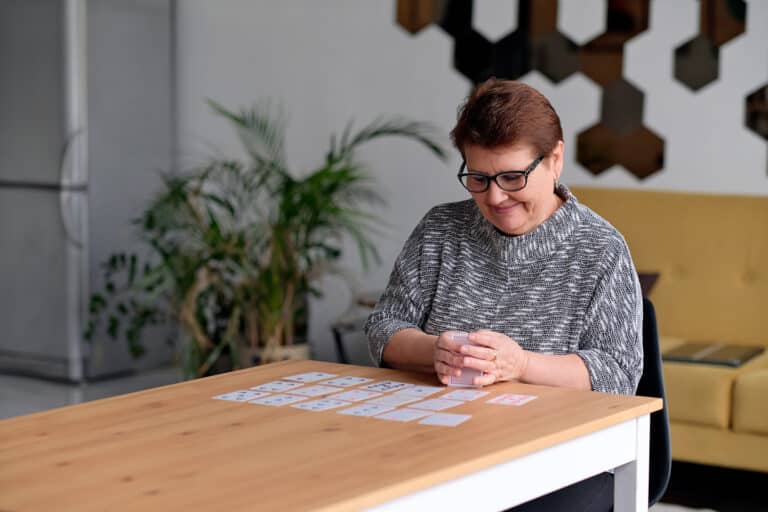Active Living in Assisted Living: Embracing a Vibrant Lifestyle
Aging is a journey filled with new opportunities for growth, connection, and fulfillment. For seniors, maintaining an active lifestyle—physically, socially, and recreationally—can be the key to greater well-being and happiness. An Assisted Living Facility in King of Prussia, like those offered by We Care Senior Solutions, is uniquely equipped to support this vibrant way of life. In this comprehensive blog, we’ll explore how staying engaged in a variety of activities can lead to improved health, increased happiness, and a renewed sense of purpose for seniors.
The Power of Active Living for Seniors
Active living isn’t just about exercise; it’s a holistic approach that encompasses movement, mental stimulation, and meaningful social connections. Research consistently shows that seniors who remain engaged in physical, social, and recreational activities experience:
- Improved physical health and mobility
- Enhanced cognitive function
- Reduced risk of chronic diseases
- Greater emotional resilience
- Lower rates of depression and anxiety
- Increased life satisfaction and happiness
Let’s dive deeper into each of these pillars and see how assisted living communities create an environment where seniors can thrive.
Physical Engagement: The Foundation of Healthy Aging
Why Physical Activity Matters
Physical activity is a cornerstone of healthy aging. Seniors who stay active enjoy more years of life with less pain, greater independence, and a lower risk of chronic diseases like heart disease, diabetes, and osteoporosis. Even modest increases in activity, such as daily walks or gentle exercise, can lead to significant health benefits.
Physical Activities in Assisted Living
Assisted living communities offer a range of tailored fitness programs, including:
- Group exercise classes (yoga, tai chi, water aerobics)
- Walking clubs and guided nature walks
- Strength training with resistance bands or light weights
- Chair exercises for those with limited mobility
- Dance classes and movement-based recreation
These activities are designed to accommodate all ability levels, ensuring everyone can participate safely and comfortably.
Benefits of Staying Physically Active
| Benefit | Description |
| Improved Strength & Balance | Reduces fall risk and increases independence |
| Enhanced Cardiovascular Health | Lowers blood pressure and boosts heart health |
| Better Joint Health | Reduces stiffness and pain, especially in arthritis |
| Increased Bone Density | Lowers the risk of osteoporosis and fractures |
| Improved Sleep | Promotes deeper, more restful sleep |
| Greater Mobility | Makes daily tasks easier and supports independent living |
Regular movement also releases endorphins, the body’s natural mood boosters, helping to combat depression and anxiety.
Social Engagement: The Heartbeat of Happiness
The Dangers of Isolation
Social isolation and loneliness are significant risk factors for poor health among seniors. Studies link loneliness to higher rates of depression, cognitive decline, and even increased mortality. Assisted living communities are designed to break this cycle by offering abundant opportunities for connection.
Building Community in Assisted Living
Residents in assisted living benefit from:
- Shared meals in communal dining rooms
- Group outings to cultural events, museums, and parks
- Clubs and hobby groups (gardening, book clubs, art classes)
- Game nights, trivia, and card tournaments
- Holiday celebrations and themed parties
- Volunteer and intergenerational programs
These activities foster friendships, create a sense of belonging, and provide daily opportunities for meaningful interaction.
Social Benefits at a Glance
| Social Activity | Key Benefits |
| Group Meals | Reduces loneliness, improves nutrition |
| Clubs & Groups | Builds friendships, encourages teamwork |
| Community Events | Creates shared memories, strengthens bonds |
| Volunteer Work | Provides purpose, boosts self-esteem |
Seniors who maintain strong social networks report higher levels of happiness and life satisfaction.
Recreational and Cognitive Engagement: Fuel for the Mind and Soul
Mental Stimulation is Vital
Cognitive decline is not an inevitable part of aging. Regular engagement in mentally stimulating activities helps keep the brain sharp, delays the onset of dementia, and enhances psychological well-being.
Recreational Activities in Assisted Living
Assisted living communities offer a wide variety of recreational and educational programs, such as:
- Arts and crafts workshops (painting, pottery, knitting)
- Music and dance therapy
- Puzzle and board game sessions
- Book clubs and discussion groups
- Educational lectures and technology classes
- Gardening and nature activities
These programs are not only enjoyable but also provide cognitive challenges that help maintain memory, attention, and problem-solving skills.
Creative and Educational Benefits
| Activity Type | Cognitive Benefit |
| Art & Music Therapy | Enhances creativity, emotional expression |
| Puzzles & Games | Improves memory and strategic thinking |
| Educational Classes | Stimulates curiosity, lifelong learning |
| Technology Workshops | Builds confidence, bridges generational gaps |
Engaging in creative pursuits also offers emotional outlets, reducing stress and fostering a sense of accomplishment.
The Comprehensive Approach of Assisted Living Communities
Personalized and Inclusive Programming
One of the greatest strengths of assisted living is the commitment to personalized, inclusive programming. Life Engagement Coordinators work with residents to develop activity calendars that reflect their interests and abilities, ensuring everyone can find something meaningful to do.
Supportive Environments
Assisted living communities are designed for accessibility and safety, with features like:
- Barrier-free walking paths and exercise areas
- Adaptive equipment for fitness and recreation
- Transportation to off-site events
- On-site staff to assist with mobility and participation
This support enables seniors to focus on enjoyment and engagement, rather than the logistics or challenges of activity.
Holistic Wellness
Wellness in assisted living goes beyond physical health. Communities prioritize:
- Nutritious, balanced meals tailored to dietary needs
- Preventive healthcare and regular check-ups
- Emotional support and counseling services
- Opportunities for spiritual growth and reflection
This holistic approach ensures residents’ needs are met on every level, promoting a sense of security and peace of mind.
Real-Life Impact: Stories of Transformation
Consider the story of a resident who, after moving to an assisted living community, discovered a passion for painting through weekly art classes. Not only did she develop a new skill, but she also formed close friendships with fellow artists, participated in community art shows, and found renewed purpose in her daily life.
Another resident, once hesitant to join group activities, found joy in morning walking clubs. The camaraderie and gentle encouragement from peers helped him regain strength, improve his balance, and reduce his risk of falls. His confidence grew, and he began participating in other social events, enriching his overall well-being.
These stories are echoed in communities across the country, demonstrating the profound impact of active living on seniors’ happiness and health.
Overcoming Barriers: How Assisted Living Makes Engagement Possible
Addressing Mobility and Health Challenges
For some seniors, health conditions or limited mobility can make participation difficult. Assisted living communities address these barriers by:
- Offering adaptive activities for all ability levels
- Providing transportation and mobility assistance
- Ensuring staff are trained to support diverse needs
- Creating inclusive, judgment-free environments
This ensures that every resident, regardless of physical ability, can enjoy the benefits of active living.
Combating Motivation and Confidence Issues
Transitioning to a new environment or trying unfamiliar activities can be daunting. Assisted living staff and peer groups provide encouragement, support, and gentle “peer pressure” that helps residents step out of their comfort zones and try new things.
The Science Behind Engagement and Well-Being
Physical Health
- Regular physical activity lowers the risk of cardiovascular disease, diabetes, and some cancers.
- Exercise improves muscle mass and bone density, key to maintaining independence.
- Even light activities contribute to longevity and a better quality of life.
Mental and Emotional Health
- Social interaction reduces the risk of depression and cognitive decline.
- Engaging in meaningful activities provides a sense of purpose and accomplishment.
- Creative and educational pursuits stimulate the brain and foster resilience.
Life Satisfaction and Happiness
- Seniors who are active, social, and engaged report higher levels of life satisfaction and happiness.
- Assisted living communities provide the structure, resources, and encouragement needed to maintain this vibrant lifestyle.
Tips for Seniors and Families: Embracing Active Living
- Explore New Interests: Try a new hobby or class—art, music, gardening, or technology.
- Stay Social: Attend community events, join clubs, or simply share meals with others.
- Prioritize Movement: Participate in group exercise, even if it’s gentle or seated.
- Engage Your Mind: Read, play games, or take part in educational workshops.
- Ask for Support: Don’t hesitate to seek help from staff or peers in your community.
- Celebrate Achievements: Every step toward active living is a victory—celebrate progress, no matter how small.
Active Living is Happy Living
Assisted living communities are more than just places to reside—they are vibrant, supportive environments where seniors can flourish. By providing opportunities for physical activity, social connection, and recreational engagement, these communities empower residents to live life to the fullest. The result? Improved health, greater happiness, and a renewed sense of purpose at every stage of the aging journey.
If you or a loved one is considering assisted living, remember: an active, engaged lifestyle is not only possible—it’s within reach. At We Care Senior Solutions, we are committed to helping every resident discover the joy of active living because we believe that happy living starts with staying engaged, connected, and inspired.
References:
This blog is informed by leading research and best practices in senior wellness, as highlighted by The McKendree, Meridian Senior, Sundial Assisted Living, Lantern Crest Senior Living, Homestead Home Health Care Services, and the National Institute on Aging, among others. For more resources and guidance, visit our website or contact our team to learn how we can support your journey to vibrant, active living.







